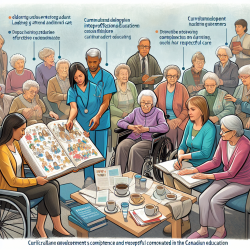The journey of maternal healthcare in Zambia offers a profound lesson on the intersection of socioeconomic factors and healthcare utilization. From 1997 to 2014, significant disparities have been observed in the access and use of maternal healthcare services, as highlighted by a comprehensive study conducted by He et al. (2021). This blog aims to provide practitioners with insights into these findings and offer strategies for improving maternal health outcomes by addressing the underlying socioeconomic determinants.
The Impact of Socioeconomic Factors
The study reveals that women in higher wealth quintiles generally have better access to health facility delivery and postnatal care services compared to those in lower quintiles. Interestingly, timely antenatal care visits were more prevalent among women in lower wealth quintiles. These findings underscore the complex relationship between wealth status and healthcare utilization.
Education emerges as a critical factor influencing maternal healthcare utilization. Women with primary or higher education levels are more likely to seek adequate antenatal care, facility delivery, and postnatal services. This highlights the need for educational interventions that empower women with knowledge about their health and available services.
Strategies for Practitioners
- Community Engagement: Engage with local communities to understand cultural and economic barriers that hinder access to maternal healthcare. Tailor interventions to address these specific challenges.
- Educational Programs: Implement educational initiatives that focus on increasing health literacy among women, particularly those with limited formal education. Use mass media channels like radio and television to disseminate information effectively.
- Policy Advocacy: Advocate for policies that address socioeconomic inequalities in healthcare access. Collaborate with government agencies and NGOs to develop programs that support vulnerable populations.
- Research Initiatives: Encourage further research into the specific barriers faced by different demographic groups. Use data-driven insights to design targeted interventions that improve service uptake.
The Path Forward
The findings of this study provide a valuable framework for practitioners aiming to enhance maternal healthcare services in Zambia and similar contexts. By focusing on education, community engagement, and policy advocacy, practitioners can help bridge the gap between socioeconomic disparities and healthcare access.
The journey towards equitable maternal healthcare is ongoing, and continuous research is essential to adapt strategies to evolving challenges. Practitioners are encouraged to delve deeper into the data presented in this study and collaborate across sectors to drive meaningful change.
Socioeconomic Determinants of Maternal HealthCare Utilisation in Zambia: 1997-2014










